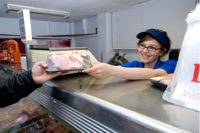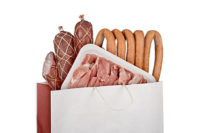Communicating the value of packaging and selling its total cost of ownership are not new ideas. There have been conversations within the trade for years. Some manufacturers put those thoughts into practice, but more often those discussions assume the guise of interesting conjecture. Today, conveying value is more important than ever because of the many challenges faced by manufacturers perhaps the most daunting is what some describe as the “commoditizing” of packaging.
It can be argued that packaging has not changed much in the past couple of decades. There have been innovations and improvements, but no real disruptive change. The race no longer has a distinctive leader. Technologies have been learned and understood by the players and, generally speaking, everybody can do what everybody else does. At the same time, processors have access to incredible amounts of information and know infinitely more about the packaging technologies available to them. The math is predictable. A lot of suppliers offering technologies perceived to be pretty much the same says that best price becomes hugely influential.
Add to this recipe the astounding proliferation of case-ready products in retail fresh meat cases. The 2015 National Meat Case Study shows case-ready occupies 75 percent of meat case space compared with 49 percent just 13 years ago. The more value processors put into their products during processing, the more sophisticated packaging has to be to protect that investment and deliver that quality to the meat case and ultimately to consumers. It is easy to understand the enormous margin pressures on packaging suppliers.
Separating one packaging manufacturer from another means directing conversations with processors toward real value delivered. Consequently, service and marketing have assumed center stage. Assigning monetary values to critical resources such as technical service and applications scientists — services by and large built into price — and constantly communicating them to processors can be effective differentiators. Some manufacturers even locate personnel within key customers’ plants — the epitome of service. “What separates packaging suppliers today is knowledge of the meat industry more than exclusive knowledge of the packaging industry,” explains one executive.
Does the basket of services available from larger, more resourced suppliers exclude the smaller players from the game? “No, but they have focus on one or two items and produce them as efficiently as they can and try to overcome the service advantages of larger competitors and still sell their products. But, they still have to be selling at lower margins,” says the same source.
Of course, there are other ways to deliver value. Processors value “optimization,” meaning lower cost of throughput for making a product, and packaging it with the least amount of yield loss and have that package work perfectly every time so it is in essence tailored to the packaging system. Every meat plant is unique, whether it is the personnel or the packaging equipment in place, but the result is the packaging lines behave a little differently from one to another. The supplier who can best tailor or tweak his product to resolve any problem whether it is process or procedure in that particular environment is going to be delivering tangible value to the customer.
Whether it is a symptom of continuous improvement or a goal of the industry, packaging performance has become so good that product shelf life has benefitted significantly. Product inventories and distribution distances have increased by virtue of consolidation and shelf life increases had to follow. How long product can be held and still deliver quality and safety is a vital driver in the industry. Packaging-equipment innovation has contributed mightily to this through advances in gas-flush and heat-seal technologies, which enable processors to have their products look like they want them to look and hold that appearance for a longer period of time — 120 days or more, in some cases.
All of these services and high-performance packaging triumphs do come with costs. Does it follow that packaging prices must naturally increase? According to one industry observer, it does not. “Processors have standardized packaging costs to where they do not expect them to go down, but they also do not expect them to go up. They expect the producers of the packaging to be innovative and creative enough to tailor the product without increasing the cost.”
The only thing that possibly can alter this circumstance is some new and disruptive technology that delivers such obvious value that everyone is willing to pay extra for it because they see the immediate benefit to their businesses. Sadly, nothing remotely resembling that is on the horizon.
No tears for packaging, though. Many players are performing well, but to do so they must be constantly vigilant to marketplace dynamics and be willing to reinvent programs, processes, products and sometimes even themselves to ensure customers recognize their value. NP
State of the Industry 2016 segments
| Industry overview | Goes live Oct. 14 |
| Beef (CAB) | Oct. 18 |
| Beef (NCBA) | Oct. 19 |
| Pork (Pork Board) | Oct. 20 |
| Pork (Sun Trust) | Oct. 21 |
| Chicken | Oct. 24 |
| Turkey | Oct. 25 |
| Veal | Oct. 26 |
| Lamb | Oct. 27 |
| Food Safety | Oct. 28 |
| Packaging | Oct. 31 |








